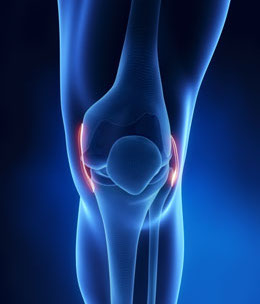Lateral collateral ligament is one of the four major ligaments in our knee. To be more specific and scientific, it is called the fibular collateral ligament. As the name suggests, it is located on the outer part of the knee. Read on to find out more about this ligament helping in our body's balancing act, literally.

How relieved we would have been if our human bodies did not have so many complications! But it is also true that without these complications, homo sapiens are incomplete and incapable. These are precisely the things which help a Ronaldo or a Usain Bolt get to the top. If it was not for the fascinating mechanism of our knees and legs, these two could be rendered worthless. It is the knees and the legs over which their skill is based upon. Hence, the point here was human body and its complicated structure.
Consequently the structure of our knee is the best example of that. It is the ever important part of our body taking the total responsibility of keeping us on our feet, bearing our weight. Our knees have four major ligaments and numerous muscles and major joints and what not. One of them is the lateral collateral ligament (LCL) or the fibular lateral ligament. Any injury to this ligament could create a problem in balance and stability of the knee. What is the deal with one of the pivots of our knee, here is more on that.
Formation of the Ligament
This ligament is on the outer side of the knee, that is the lateral side of the knee and is a part of the extrinsic knee ligaments. This ligament is narrow, as compared to the medial collateral ligament. Akin to the medial collateral ligament, it stretches from almost the end of the thigh bone to the shin bone. To put it simply, it is the counterpart of the medial collateral ligament on its opposite side. The only difference is that since this ligament is flexible than the medial collateral ligament, it is less susceptible to injury and joint pain than its medial counterpart.
Lateral Collateral Ligament Injury
Just as any other ligament, this crucial part of the knee can undergo a sprain or stretch, a partial or incomplete tear or a complete tear. The basis of an injury to this ligament is pressure placed on the inner part of the knee joint, which leads to strain on the outer part of the joint. A grade one injury of LCL can be a sprain and a grade 2 injury is an incomplete tear of the ligament. The final blow to this ligament is the grade 3 injury, where there is a complete tearing of the ligament. All these 3 conditions lead to LCL pain, swelling and tenderness around the affected spot.
Diagnosis and Treatment
A simple LCL test will easily identify if there is any problem, for instance looseness in the ligament. The test consists of bending the knee to 25 degrees, followed by exerting pressure on the outer part of the knee. X rays and MRI scan are other options to detect such an injury.
Treatment mainly comprises rest, cold compress, elevating the legs, using knee support braces and anti-inflammatory medicines. Once the initial shock gets better, light knee exercises can also be done to strengthen the knee. In case of complete tear, a surgery may be essential.
In case you observe any swelling or tenderness around the injured part of the knee, in this case the LCL, immediately contact a health care professional. Another significant factor to keep in mind is that, if you are already being treated for LCL injury and if you observe instability in your knee, do not think twice before telling your doctor. In addition to that, consult the doctor if the pain or swelling subsides in the initial stages but resurrects. This is an indication that the ligament has not healed properly.
There, that was about one of the major pivots of our knees. Lateral collateral ligament needs to be in proper shape, so that our knees do not have to kneel! Whenever it is possible, try and avert a potentially injurious situation (I know its almost impossible, but you could still try!) and prevent the injury. In sports of course you cannot do it and you cannot preempt an injury as well. Nevertheless, here is where I leave you reeling in knee-deep thoughts! Take care!


 How relieved we would have been if our human bodies did not have so many complications! But it is also true that without these complications, homo sapiens are incomplete and incapable. These are precisely the things which help a Ronaldo or a Usain Bolt get to the top. If it was not for the fascinating mechanism of our knees and legs, these two could be rendered worthless. It is the knees and the legs over which their skill is based upon. Hence, the point here was human body and its complicated structure.
How relieved we would have been if our human bodies did not have so many complications! But it is also true that without these complications, homo sapiens are incomplete and incapable. These are precisely the things which help a Ronaldo or a Usain Bolt get to the top. If it was not for the fascinating mechanism of our knees and legs, these two could be rendered worthless. It is the knees and the legs over which their skill is based upon. Hence, the point here was human body and its complicated structure.